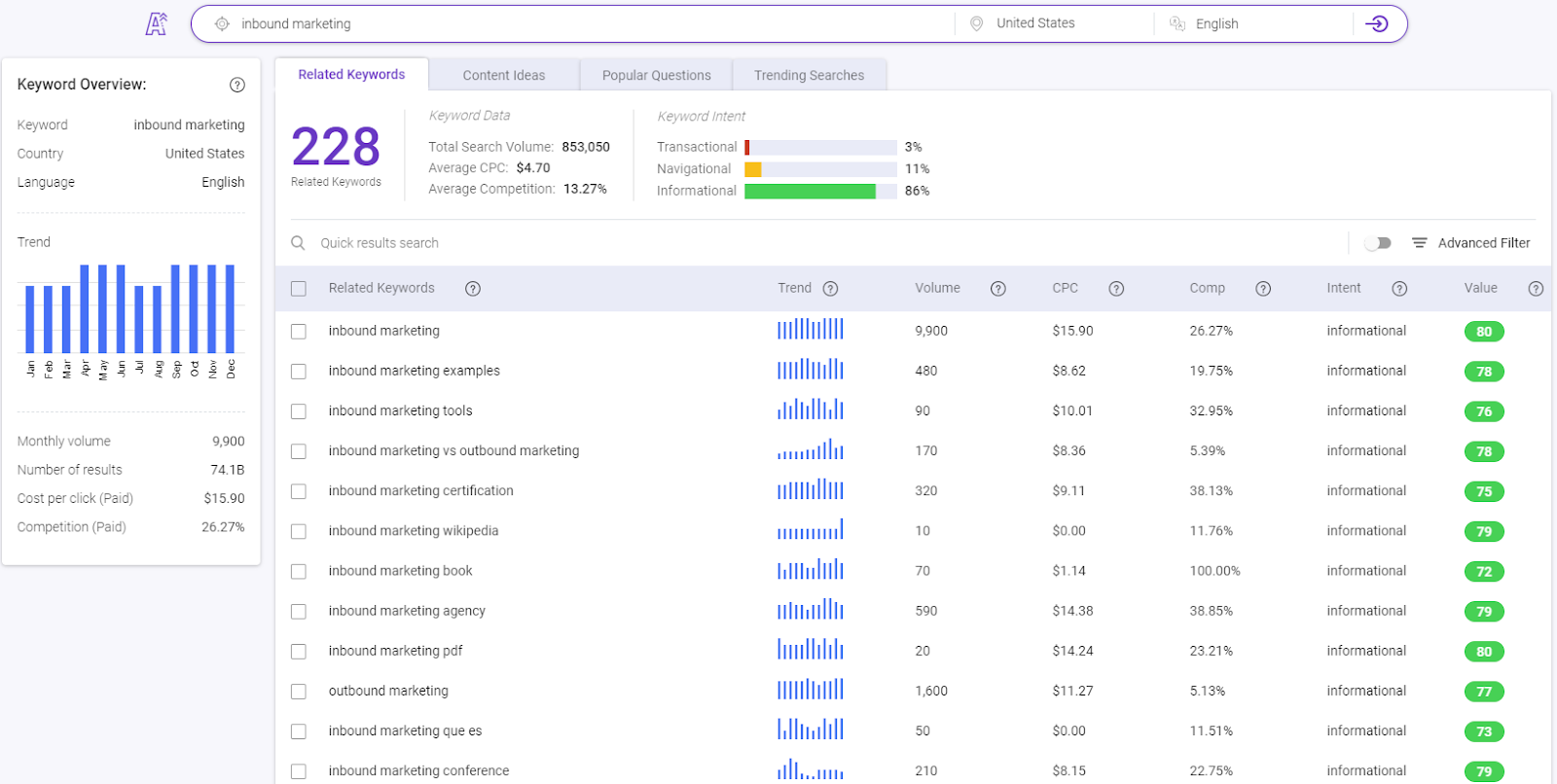Steph W. from SEOPressor


...help you check your website and tell you exactly how to rank higher?


96
score %
SEO Score

Found us from search engine?
We rank high, you can too.
SEOPressor helps you to optimize your on-page SEO for higher & improved search ranking.
By vivian on December 8, 2020

Want to get traffic that converts in a few clicks? It’s important to revisit your current keyword strategy and take a look at pain point SEO.
For marketers, pain points sometimes are not as straightforward as an awful migraine or a bad hip that is aggravated by the weather.
In this article, we will go through what you can do to ensure you’re creating more high-converting, end of funnel posts with a focus on customer pain points. And from pain point marketing show you how, you can drive traffic from the content back to your store.
Today we will be diving into the world of customer pain points and specifically how you can create SEO-driven content targeting these buyer keywords.
We will also be looking at an amazing case study that delivers results by marketing themselves as indispensable to
Real or perceived, pain points define a customer concern that they consciously bear and are actively seeking for a solution.
Like any problems, customer pain points can be diverse or in certain cases, the prospects might not even be aware of the pain point they are experiencing.
Subsequently, Pain Point Marketing focuses on these problems and promotes your merchandise or services as a unique solution.
In theory, it’s through customer pain points that you are able to discover your potential leads and map your content to your buyer journey.
To find them, you need to ask:

Here are the four most predominant pain points;
At the onset, it’s ideal to weigh where your solution plugs into the pain points in marketing categories.
Viewing these pain points in categories lets you think about how to position your company or product as a solution and the focus to highlight.
Let’s say, your target audience falls into the support pain point. This means that he or she is already familiar with the service, instead of selling your benefits to them, it would be better to talk about the 24/7 support available or constant updates that your product has.
Yet, as a marketer or blogger, you have to apply yourself more because most prospective customer concerns are layered and complex.
Given you’re now more aware of what pain points are, you’ll need to piece together how to identify them definitively.
Even if a large proportion of your prospects are presumably coping with matching or almost identical pain points, the stimulus of these pain points ostensibly is as divergent as your clientele base.
For that reason, qualitative research is a key facet of distinguishing customer pain points.
Approach:
Often, you may presume ideas concerning your customer’s pain points, but then realize what alarms you regarding your merchandise, services, or website does nothing much to divulge the real problem.
So, pick the appropriate open-ended questions, encourage responses, and collate customer feedback.
Example Questions to Ask your customers in the research
Well, some queries may seem to attract negative responses, so, single-out the questions you feel should apply! Also, you can blend these probes as part of a broader survey amid a more positive context.
Once you start obtaining feedback, watch for trends. If at least 30-40% of your respondents acknowledge a pressing issue, chances are you’ve identified a pain point.
In some cases, your customers’ pain points might not be that unnerving; it could be, they’re just needs.
An inquest into customer behavior through research can, therefore, support your firm’s SEO strategy.
Case Study;

Although it’s a household name today, Febreze suffered a rough patch before emerging as a leading brand. So, from becoming a potentially failed Procter & Gamble product, how did Febreze achieve this feat?
After a run of below-average results with their promotional campaigns, three things would lead to a complete turnaround in fortunes. First would be smart observational findings, next, active pain point marketing research, and finally, a comprehensive remodeling of its marketing strategy.
In the long run, the customer would end up enjoying the “feel good” factor, something that was missing in the early stages.
Understanding the particular customer needs your product or service fills is key to successfully adopting a top-down approach to content planning.
Do your prospects respond to marketing content that grants them a feeling of appreciation or importance? Customers desire products or services that make them feel special.
Additionally, your SEO strategy should be responsive to customer feedback and afford them assurances in case anything goes wrong.
Digital marketing pain points SEO strategy can support your efforts, making you more responsive to customer concerns, as well as provide you with the means to offer assurances.
Amid this process, it’s essential to understand your prospects language, especially when they’re discussing their problems. And more so, identify the keywords they’re using: the money keywords.
Make use of Keyword Research tools such as Google Keyword Planner or LSIGraph to discover these pain point marketing keywords.
It’s interesting how we can often fall into the trap of going for the most common keywords with the highest traffic.
Yes, if we are ranking for those keywords, they are a good ego boost for your traffic but this traffic are often people from the top of the funnel.
Find keyword ideas—when you’re conducting keyword research, start by reflecting on a topic, an idea, or head keyword, otherwise also known as a “seed.” Often, the seed comes from either industry knowledge or is related to the product or service you provide.
Search keyword volume—as you evaluate the relevance of specific keywords you target to use in your content, you’re likely to observe that search volume of most keywords varies significantly. Primarily, determine the variations of your specific keywords that are substantially popular amongst your searchers.
Determine search intent—establish what the searcher intends to find out. In that process, refine your content to suit the desired outcome of the user.
Utilize keywords silos—concerned about the organization of your content on a Webpage? Instead of placing everything on one blog, you can help your searchers navigate to supplementary pages by providing supporting links within a page.

We might be tooting our own horn, but you can do everything and more using BiQ’s keyword intelligence.
Aside from the functions above, you can also easily use BiQ to discover the ranking content and search snippets you should be targeting, all on a single platform that closes all those additional tabs that make your site stuck.
Besides understanding your customers, it also pays to be conscious of your enterprise’s competitors’ pain points alongside their keywords.
Targeting to gain an advantage over your competitors? Use the following angle, especially if the customers are actively looking for alternatives:
Where customer pain points form the basis of your business, you should use them to inform your product and content marketing process.
Because of customer pain point marketing ties into the search intent, it’ll have a significant impact on the overall performance of the content you create—potentially resulting in enhanced customer experiences as well as an overall increase in conversions.
Address customer pain point marketing through mapping these concerns alongside the customer journey. Next, build content and an SEO strategy in the framework of applicable keywords. Finally, conduct strategic outreach.
So, anything that grants you an avenue to solve your customers’ concerns should form the focal point of your pain point marketing strategy. Design not just blog posts, but also podcasts, webinars, eBooks, case studies, videos, and more to help enlighten your customers.
Most importantly, always position your company as a potential solution.
Typically, the more considerable the search volume, the higher the competition and input required to succeed in organic ranking. While it appears appealing to rank in keywords with a notable number of searches, these terms only make up a section of overall searches performed on the Web.
In fact, some of the keywords that have significant traction often depict ambiguous intent. What’s more, by targeting such phrases, you could even risk drawing prospects to your site whose objectives don’t match what you provide on the page.
If you Google Analytics, do you notice any patterns? Arguably, a substantial portion of your blog traffic actually comes from a select few blog posts, right?
Well, each content you create differs compared to another. But obviously, some will be outright money-makers. Usually, the latter group addresses itself to the customer pain points.
Check if your high ranking blog post are actually fulfilling this pain point aim and not just information, is it link to a closure content. Or is it simply informational, if yes it’s time to optimize it.
Our solutions never exist in a vacuum, they are created as an answer to help a customer with their problems.
So why should it be any different with our content marketing? It’s not effective to concentrate only on driving traffic without cause.
Align your SEO and content marketing integration to address customer pain points. Because ultimately this is what helps you match content to search intent, which results in better user experience and better conversions. Tie your product into your content as the solution to your customer’s problems.
Kickstart your pain point SEO strategy today and let us know if it is working for you down on the comments below.
Updated: 30 December 2025


Save thousands of dollars (it’s 100x cheaper)

Zero risk of Google penalty (it’s Google-approved)

Boost your rankings (proven by case studies)
Rank High With This Link Strategy
Precise, Simplified, Fast Internal Linking.
